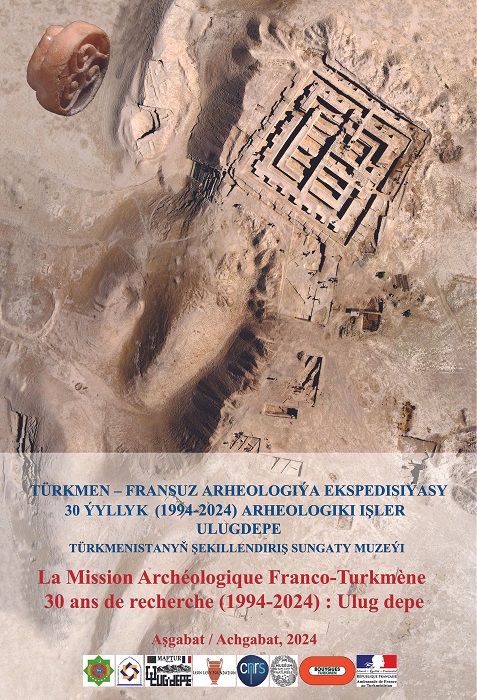French diplomacy has maintained close ties with archaeology since the middle of the 19th century. After World War II, French archaeological research abroad received a new impetus with the support of the Ministry of Europe and Foreign Affairs. Currently, more than 150 missions are supported annually, which are deployed on five continents and operate in such iconic locations as Pompeii in Italy, Angkor in Cambodia or Petra in Jordan. This activity, carried out in cooperation with the host countries, is an important component of scientific and academic cooperation.
The French‐Turkmen Archaeological Mission (MAFTUR) set itself the goal in 1994 to explore Dehistan, on the Misrian plain, at the site of Geokchik depe (1994-1997). Since 2001, a new page of the joint mission has been opened with the start of excavations at Ulug‐depe (which means “Great Hill”), located in the south‐west of the country, 170 km east of the capital Ashgabat.
For 30 years now, the French‐Turkmen Archaeological Mission has been cooperating, in particular, with the Ministry of Culture of Turkmenistan and the National Directorate for the Protection, Study and Restoration of Historical and Cultural Monuments.
This exhibition is also a tribute to Olivier Lecomte, the founder of French-Turkmen Archaeological Mission, who passed away five years ago. He was an expert on the last pre‐Islamic periods (the Hellenistic period, the Parthian period and the Sassanian period), led the French-Turkmen Archaeological Mission from its inception until 2013 and the Indo-Balochistan Archaeological Research Center for Central and East Asia CNRS from 2009 to 2015.
Then, under the leadership of the co‐directors of the French-Turkmen Archaeological Mission, Julio Bendezu‐Sarmiento and Muhammed Mammedov, the work on Ulug‐depe became part of the dynamics of research on regional cultural affiliation, the tasks of which were determined by Turkmen and Soviet archaeologists from such neighboring sites as Jeytun, Ilgynly‐depe, Namazga‐depe and Altyn‐depe.
In the modern scientific context, Ulug‐depe represents a large site in Central Asia due to its very extensive stratigraphy, covering an area of approximately 17 hectares and a preserved height of more than 30 meters. Ulug‐depe is also the only place in Central Asia where we can document all periods from 6000 BC to the Parthian‐Sasanian period of our era.
The permanent exhibition “French‐Turkmen Archaeological Mission, 30 years of archaeological work: Ulug‐depe” at the National Museum of Fine Arts in Ashgabat, with more than 230 exhibits, mainly traces the history of the oldest periods discovered at this site.
Considering that there are traces of Neolithic settlements, we see the development of Ulug‐depe precisely at the beginning of the Eneolithic period (5000-3000 BC), and then in the Bronze Age (3000-1500 BC). The population was engaged in irrigated agriculture and animal husbandry. The excavation of numerous clay furnaces in the residential area indicates intensive artisanal activity, and the discovery of exotic materials such as tiny turquoise and lapis lazuli beads reflects international trade between different regions. ///French Institute in Turkmenistan, 22 November 2024
